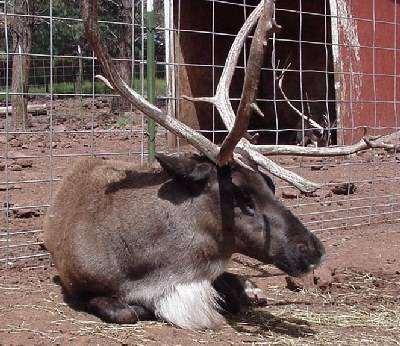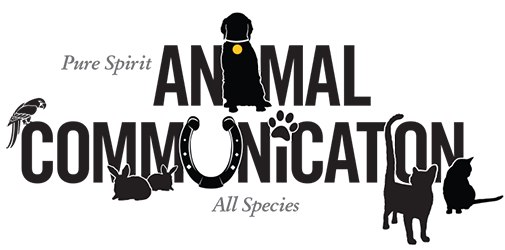Reindeer Guide More than Santa’s Sleigh
By: Trish Phillips
 Reindeer are not only associated with Santa Claus, although for many this association is strongest (especially at this time of year). Reindeer represent journeying, wandering, safe travels, strength and endurance. This may be the inspiration for the poem which linked reindeer with Santa’s sleigh. Reindeer are mobile, adaptable to new surroundings and prefer the freedom to keep moving.
Reindeer are not only associated with Santa Claus, although for many this association is strongest (especially at this time of year). Reindeer represent journeying, wandering, safe travels, strength and endurance. This may be the inspiration for the poem which linked reindeer with Santa’s sleigh. Reindeer are mobile, adaptable to new surroundings and prefer the freedom to keep moving.
History
The reindeer’s association with Santa’s sleigh began with a poem by Clement C. Moore, Twas the Night before Christmas, written in late 1824. Various versions, including the 1912 copyright version published by Houghton Mifflin Company-Boston, all have “eight tiny reindeer” pulling Santa’s sleigh. In early Norse myths, Thor’s chariot was pulled by goats who later transformed into reindeer. Some believe this was the inspiration for Moore’s poem.
Rudolph was added to Santa’s herd in 1939 when ad copywriter Robert L. May wrote a children’s poem for Montgomery Ward, the US retail store chain, entitled Rudolph the Red-Nosed Reindeer. The May poem was reprinted as a Christmas booklet, and in 1947 a friend of May’s, Johnny Marks, wrote music for the poem. The song reached the top of the Hit Parade in 1949, when US cowboy singer Gene Autry cut the record about Rudolph.
Ancient nomadic pagan Eurasian tribes featured reindeer in sacrificial religious rituals. Prior to hunting season, reindeer were either killed or consecrated and placed with a slaughtered wolf on a high platform to symbolize the gods were pleased and would not allow wolves to attack reindeer. Annual ceremonies in the spring were led by a Shaman to change the locations where images of their gods were kept.
Reindeer also feature prominently on ancient Mongolian megaliths carved with symbols. Little is known about their meaning or function; some scholars speculate they represent important people. These “deer stones” garner their name from the stylized depictions of flying deer carved into the stone.
Biological Characteristics
The European reindeer and North American caribou may be the same subspecies within the Cervidae family. Cornell University scientists have identified at least two evolutionary families of the caribou. The American subspecies is referred to as caribou; the Eurasian, reindeer. Both subspecies are domesticated and used for milk, meat, fur, shelter, tools and transportation, primarily by the Inuit tribe.
In most Cervidae species, only the male grows antlers, although in some populations females have them. Both males and females lose their antlers each year.
Symbolism and Power
Reindeer symbolize wisdom, resourcefulness, cleverness, knowledge, creativity, inventiveness and cleverness. They are honored for their nobility and representing continuation of the tribe. Other members of herbivorous Cervidae family are deer, elk and moose. Each member has its own unique symbolism based on its attributes. Deer symbolizes gentleness and caring; elk symbolizes stamina and agility; moose symbolizes self-esteem and joyful spirit of sharing accomplishments.
Reindeer are cunning survivalists and able to live in brutal environments. They are symbolic of savvy knowledge; observing the reindeer pawing beneath packed snow to find herbs and grasses led indigenous peoples to medicinal herbs. As one of the first beasts that humankind relied on for food, supplies, clothing and tools, the reindeer gained high status. Thus it is an animal of nobility and worthiness.
The Lesson
The reindeer is a family-oriented totem that is skillful in communication and social activity. Reindeer welcomes the opportunity to guide others into new directions. The reindeer’s innocent demeanor is helpful to friends and family members.
If a reindeer appears, the lesson may be that it is time for you to step up and take an active role in caring for the herd. If isolated, you are being asked to lead and get everyone to work as a team; if dominant, consider whether you are overshadowing others with your ideals. Keep in mind that the key role of reindeer is guidance.
Similarly, reindeer teaches perseverance, endurance and strength. He teaches the power of adaptability in adversity and tenacity to get things accomplished. Reindeer shows how to call upon both male and female qualities that you possess. Reindeer will aid in spiritual transition, communication and social abilities. It is about movement, finding inner peace and your place as you journey through life.
When reindeer comes into your life:
- The long spiritual or emotional journey you have been on is coming to an end and you will soon reap rewards.
- If your journey seems particularly long and arduous, seeking emotional support from others will assist you in succeeding.
- While the road ahead seems dark and daunting, you have the ability to persevere and go the distance.
Ask for reindeer help when:
- You need strength and endurance to move forward and “go the distance.”
- You feel the need to wander and want protection as you do so.
- You want to keep your social ties strong while retaining personal power.
Reindeer teaches us:
- We have the strength to make great strides spiritually and emotionally.
- We can be mobile, adapt to new surroundings, while still retaining our personal power.
Access reindeer power by:
- Thinking about the strength and endurance reindeer have to travel long distances as they wander.
- Remaining confident and allowing social group support while also retaining personal power.
References:
“Reindeer: Myth, religion and Tradition,” at Think Differently About Sheep
Ted Andrews, Animal Speak, Llewellyn Publications, 2002.
Steven D. Farmer, Animal Spirit Guides.
Readers Digest Association, Inc., The Book of Christmas, 1973.


